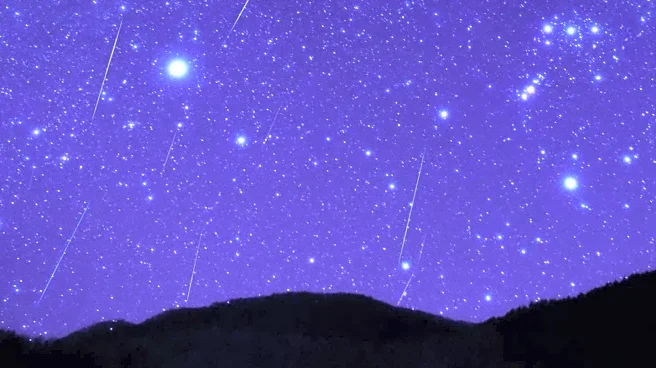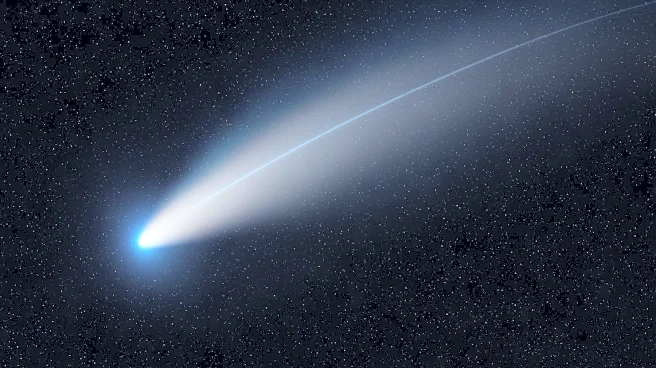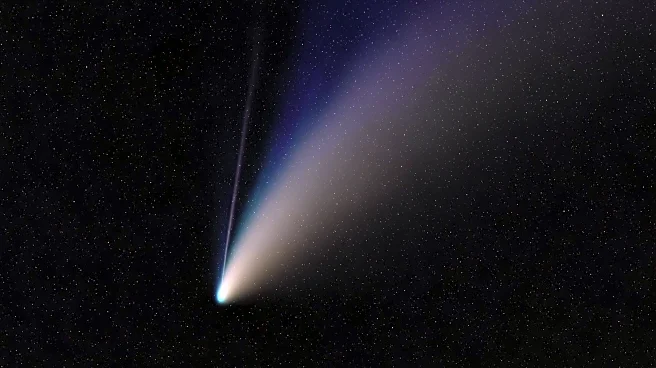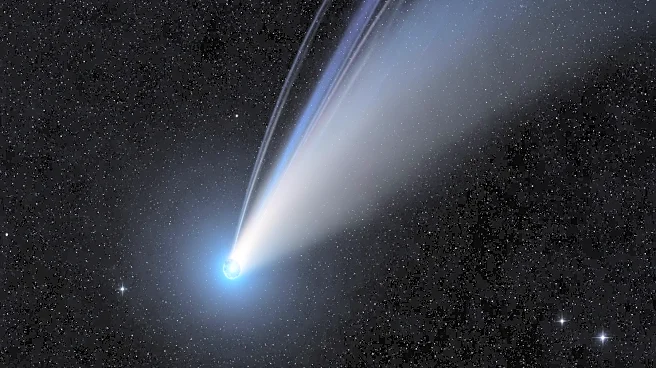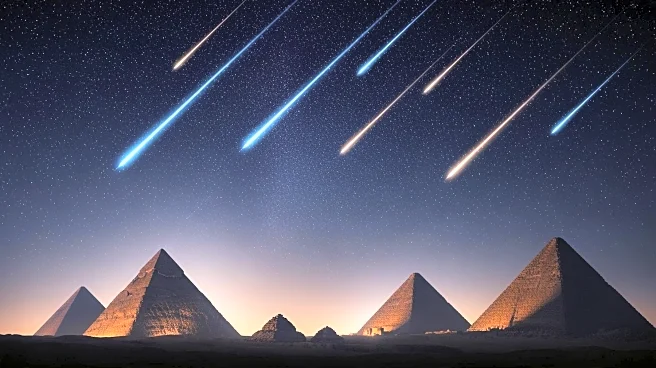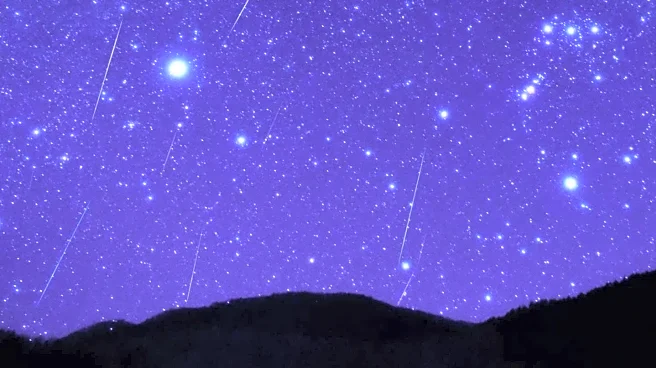What's Happening?
Comet C/2025 A6, known as Comet Lemmon, is currently visible in the night sky, offering a rare opportunity for stargazers. Discovered in January 2025 at Arizona's Mt. Lemmon Observatory, the comet has
brightened significantly, reaching a magnitude of +4, making it visible under dark skies. This celestial event coincides with the Orionid meteor shower, which peaks around October 21-22. The Orionids are caused by debris from Halley's Comet, providing a unique chance to witness two comet-related phenomena simultaneously. Comet Lemmon made its closest approach to Earth on October 21, at a distance of about 56 million miles, and will not return for approximately 1,300 years.
Why It's Important?
The appearance of Comet Lemmon is significant due to its rarity, as it will not be visible again for over a millennium. This event has sparked interest among astronomers and the general public, leading to increased engagement with astronomy. The comet's visibility, combined with the Orionid meteor shower, offers a unique educational opportunity to observe and learn about celestial phenomena. The event highlights the dynamic nature of comets and their unpredictable behavior, as demonstrated by Comet Lemmon's tail being affected by solar winds. Such events can inspire interest in science and astronomy, fostering a greater appreciation for the universe.
What's Next?
Observers are encouraged to view Comet Lemmon soon, as it will gradually fade from view after its perihelion on November 8. The comet will become increasingly difficult to see as it moves away from Earth and the Sun. Stargazers should take advantage of clear, dark skies to observe the comet and the Orionid meteor shower. The current lack of moonlight provides optimal conditions for viewing. As Comet Lemmon continues its journey, it serves as a reminder of the fleeting nature of such celestial events and the importance of seizing the opportunity to witness them.
Beyond the Headlines
The appearance of Comet Lemmon and the Orionid meteor shower underscores the interconnectedness of celestial events and their impact on Earth. The comet's green hue, caused by diatomic carbon and cyanogen, adds to its visual appeal and scientific interest. The event also highlights the role of solar activity in influencing comet behavior, as seen in the disconnection event of Comet Lemmon's tail. These phenomena offer insights into the composition and dynamics of comets, contributing to our understanding of the solar system. The public's engagement with such events can lead to increased support for scientific research and exploration.
